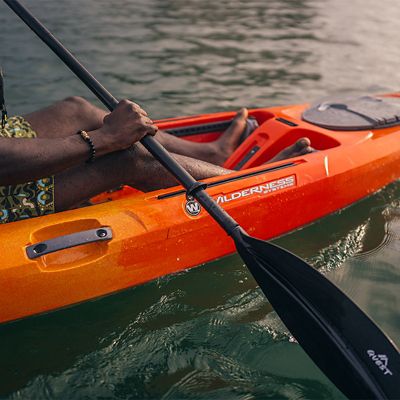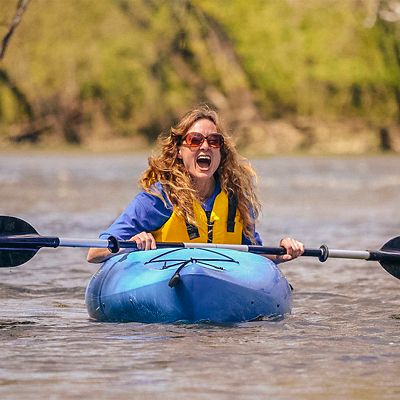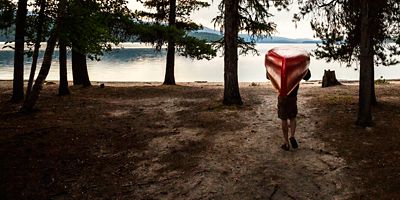
Whether it’s the end of the traditional summer paddling season, or just time to start organizing equipment after your last paddling trip, a little forethought goes a long way. Most of the gear storage is pretty straight-forward once you find room for your (dry and clean) apparel, PFD and paddle. Boats, on the other hand—especially hardshell kayaks and canoes—are another matter. Storage space is often hard to find indoors, as is outdoor space that’s safe from the elements. Here are a few pointers to help you care for and safely store your key paddling possession to prolong its on-water performance for seasons to come.
Cleaning and Pre-storage Care
Clean your kayak of dirt, bugs, leaves and other residue before storing it away. Spray your boat with water and rub it down (use a rag or scrub brush) with a mixture of mild detergent and water. Rinse it off well and, if applicable for your kayak, open the drain plug and empty out the water. Let the boat dry completely, opening all storage hatches so they can dry as well. This cleaning process is especially important if you paddle in saltwater, which can degrade the hull and other materials (notably any outfitting buckles or zippers). For canoes, maintain wooden gunwales, seats and deck plates according to manufacturer recommendations so they don’t dry out, crack or warp. If possible, detach all removable fabric sections (e.g., seat backs and cushions) and store them separately indoors.
Rodent Protection
Whether you store your canoe or kayak indoors or out, take steps to prevent a pest or rodent infestation. (Hint: Make sure all traces of food are removed before storage.) Areas that critters especially like include kayak cockpits and storage hatches; make sure all (dried) hatches are securely closed, and consider bungee-ing a piece of plastic around your cockpit as additional protection. Also remove any fabric, if possible, that might attract bugs or rodents, and try to store the boat off the ground on a rack to keep it out of reach.
Inside vs. Outside
The best storage solutions keep your boat off the ground and away from moisture and direct sunlight. If possible, store your kayak or canoe inside, where it’s protected from the sun, rodents, moisture and winter’s freeze/thaw cycle. But kayaks and canoes are bulky and can’t always fit inside a garage, basement or other storage area, so oftentimes outdoor storage is your only option—which is fine if you do it correctly.
















